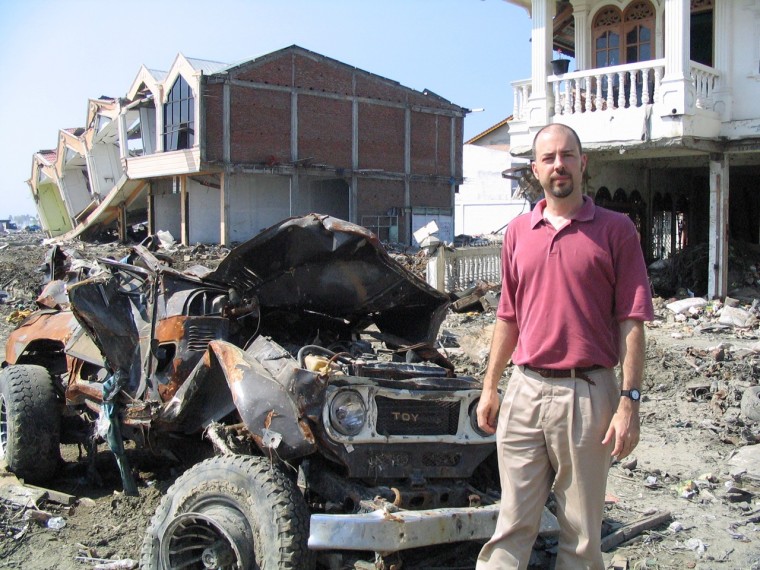How can coaches respond and help after natural disasters like the typhoon in the Philippines, the tsunami in Japan, or an earthquake in China? There are many ways to help – from giving and going to coaching from home. The lessons I learned from the 2004 Asian Tsunami can help you.

December 26, 2004, a 9.0 earthquake off the west coast of Sumatra caused a massive tsunami which killed more than 230,000 people in 14 countries – mostly in Indonesia. At the time, I lived and worked in Indonesia for a non-profit organization.
The non-profit community was taken by surprise. Most of us had no previous experience or interest in relief work. Yet, a gigantic humanitarian need was thrust upon us and we learned some valuable lessons as we attempted to help.
3 Stages of Disaster Relief
I quickly learned there are three stages of relief work required to help a stricken community. Coaches and other solo-preneurs can help at all three stages.
Phase 1: Save Lives. The first few weeks require getting as much water, food, medical aid, and temporary shelter into the effected area as possible. Time is important, not efficiency or planning. So, if people can get a flight there and carry in valuable material, this material may save lives. The vast majority of disaster victims die within 72 hours of impact.
Coaches can get money quickly to the people who can turn that money into life-saving material and efforts. Through my network I quickly raised $100,000 and got half that money immediately to colleagues on the ground who could use it. If you don’t know anyone, then a larger organization such as World Vision is a trustworthy partner.
Phase 2: Stabilize Lives. Creating temporary housing, securing clean water, sewage and food distribution prevent the spread of secondary disease. Travel will become easier into the affected area after a few weeks.
It was at this time that I made the first of three trips to Aceh, North Sumatra. The first trip was to understand the conditions in which my dozens of friends and colleagues were working in a month after the Tsunami. I went to support them. With no expertise in relief work myself, it was far more impactful for me to help the helpers.
I found they had witnessed horrific things and were living off adrenaline with little sleep. They were physically and emotionally exhausted. I listened to them. Cried with them. And encouraged them to get away and rest, even for a few days.
During this second phase, coaching and training is needed.
My second trip into the affected area provided a on-site retreat for relief workers to stop, work through their grief and trauma, and recharge. They served others effectively and needed to care for themselves if they were going to continue to be effective. Others brought practical training on grief, trauma debriefing, post-traumatic stress, conflict management, etc. These were all real, practical, and immediately applied. I began to coach an humanitarian organization leader by satellite phone.
Phase 3: Rebuild Lives. It takes years to rebuild. In Aceh, in the middle of a miles of flattened buildings I met a man living in the shell of the one odd building still standing. He told me that he was in town when the tsunami hit. When he returned home, all was gone, including 18 family members. His wife, children, parents, brothers, sisters, aunts and uncles. His employer and place of work were washed away. What will he do?
Relief workers and survivors must shift to medium- and long-term efforts. Again, training and coaching can make a huge impact at this stage.
My third trip to Aceh was six months after the tsunami when I equipped a team of 25 Indonesians in coaching skills they could use to help Acehnese people rebuild their lives. These Indonesians helped for years afterwards, supporting the local people to establish small businesses, rebuild schools, and piece their lives back together. I supported their efforts by coaching two of these Indonesian leaders by phone. All of this coaching and training was donated.
Strategies for Coaching When Disaster Strikes
- Do you know someone there or going there? Get money to them for immediate aid.
- Research what relief workers need pre-, mid-, and post-deployment so you’re ready to coach in a relevant way.
- Offer free coaching to relief workers, families of victims, or survivors.
Question: Share your experience and tips for helping when disaster strikes. You can leave a comment by clicking here.


Please note: I reserve the right to delete comments that are offensive or off-topic. You own your comments but give me permission to use them. See My Comments Policy. Read my Permissions Policy to know how you can use my posts.